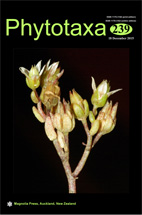Abstract
While possessing a remarkable diversity in the acidic and oligotrophic waters of the Amazon basin, the genus Pinnularia appears underdescribed in the region. In this study, we present light and scanning electron microscopical observations on Pinnularia caprichosa sp. nov. from Tupé Lake, a dendritic lake located on the floodplain of the Negro River basin. This new taxon has a large axial area and transapical striae that are slightly radiate to parallel and longer in the middle portion of the valve. The species was compared with Pinnularia elliptica, P. instabilis, P. lacunarum, P. montana, P. permontana and P. subflexuosa, all of which closely resemble P. caprichosa but differ from the new species in specific details of size, striae density and valve shape.

